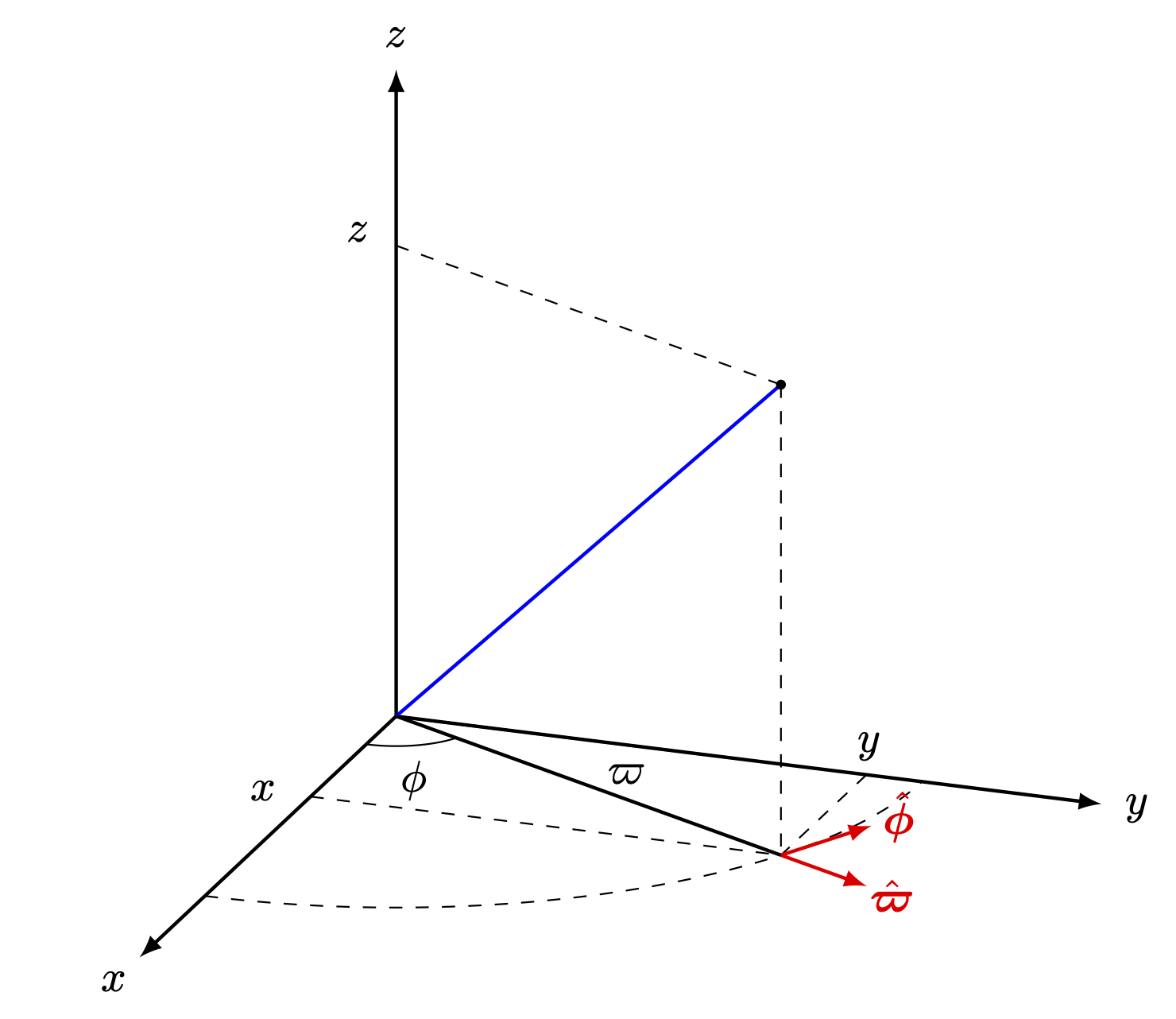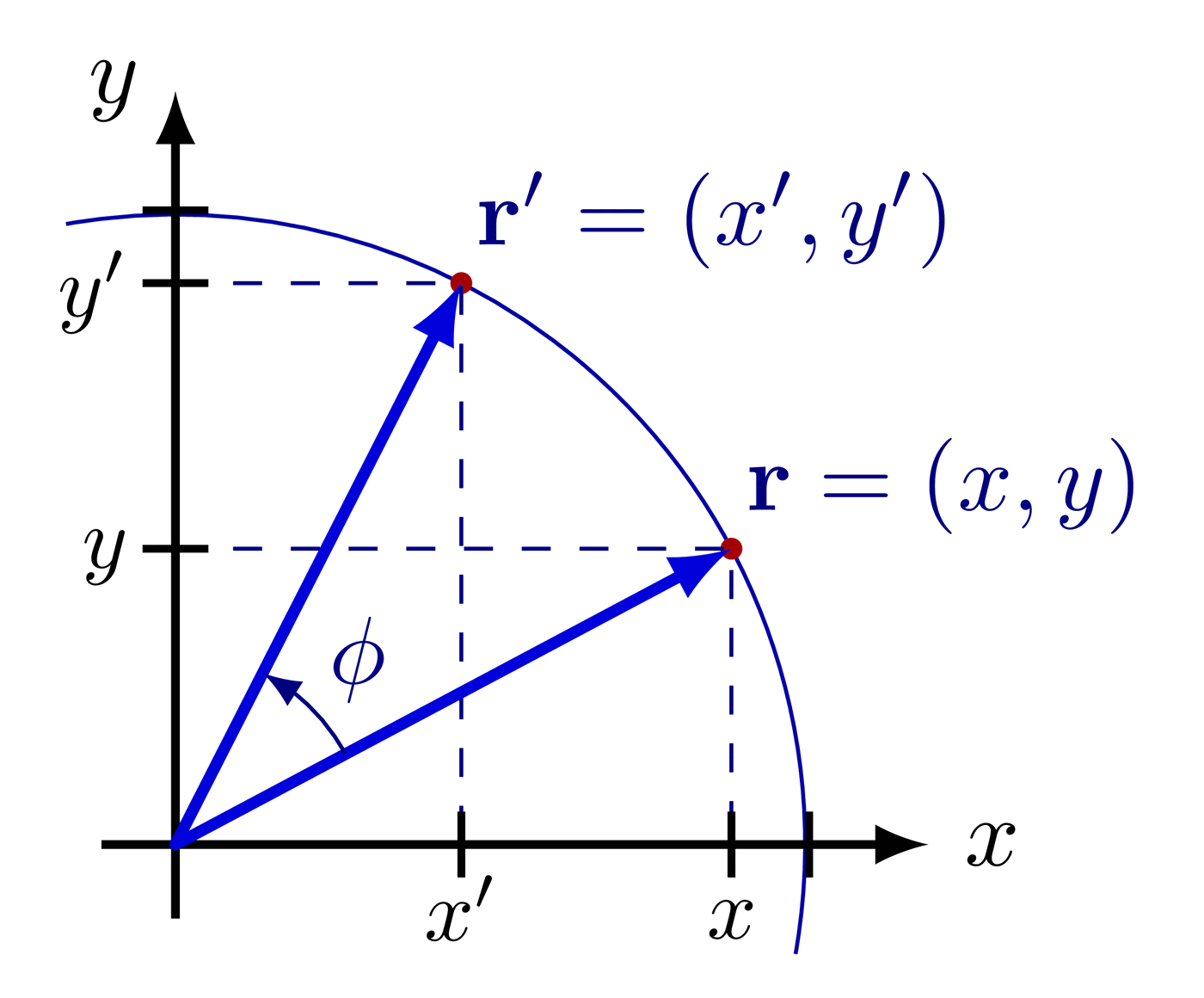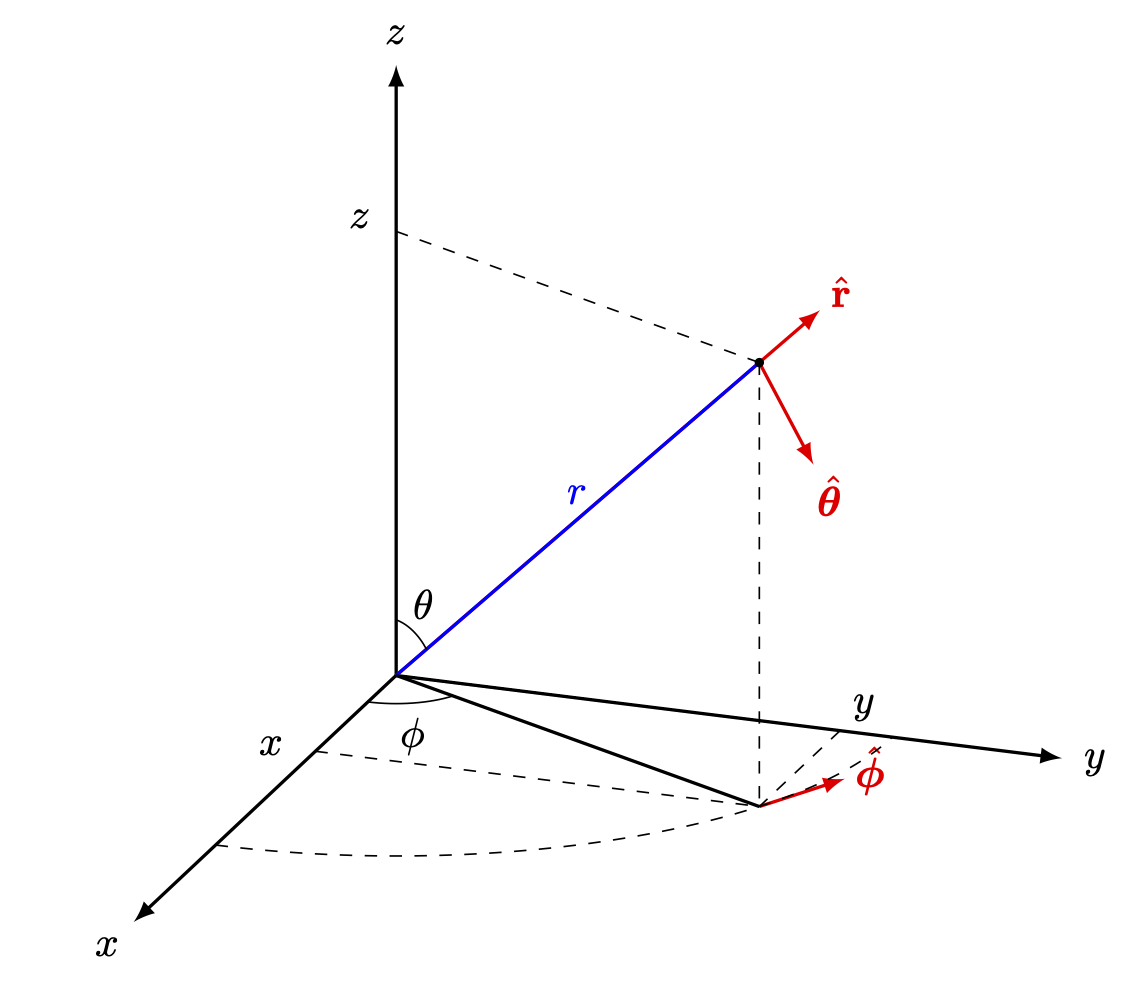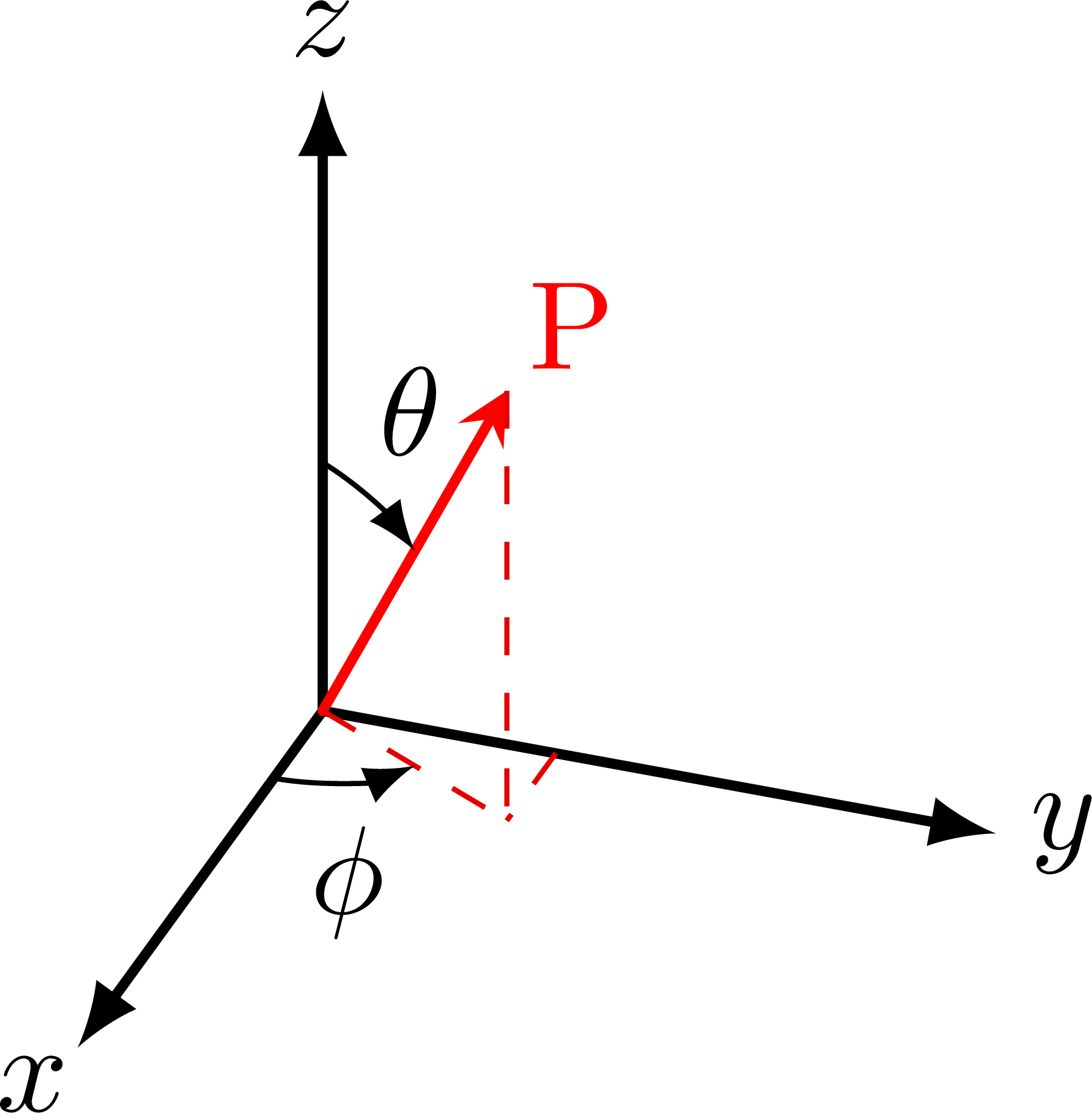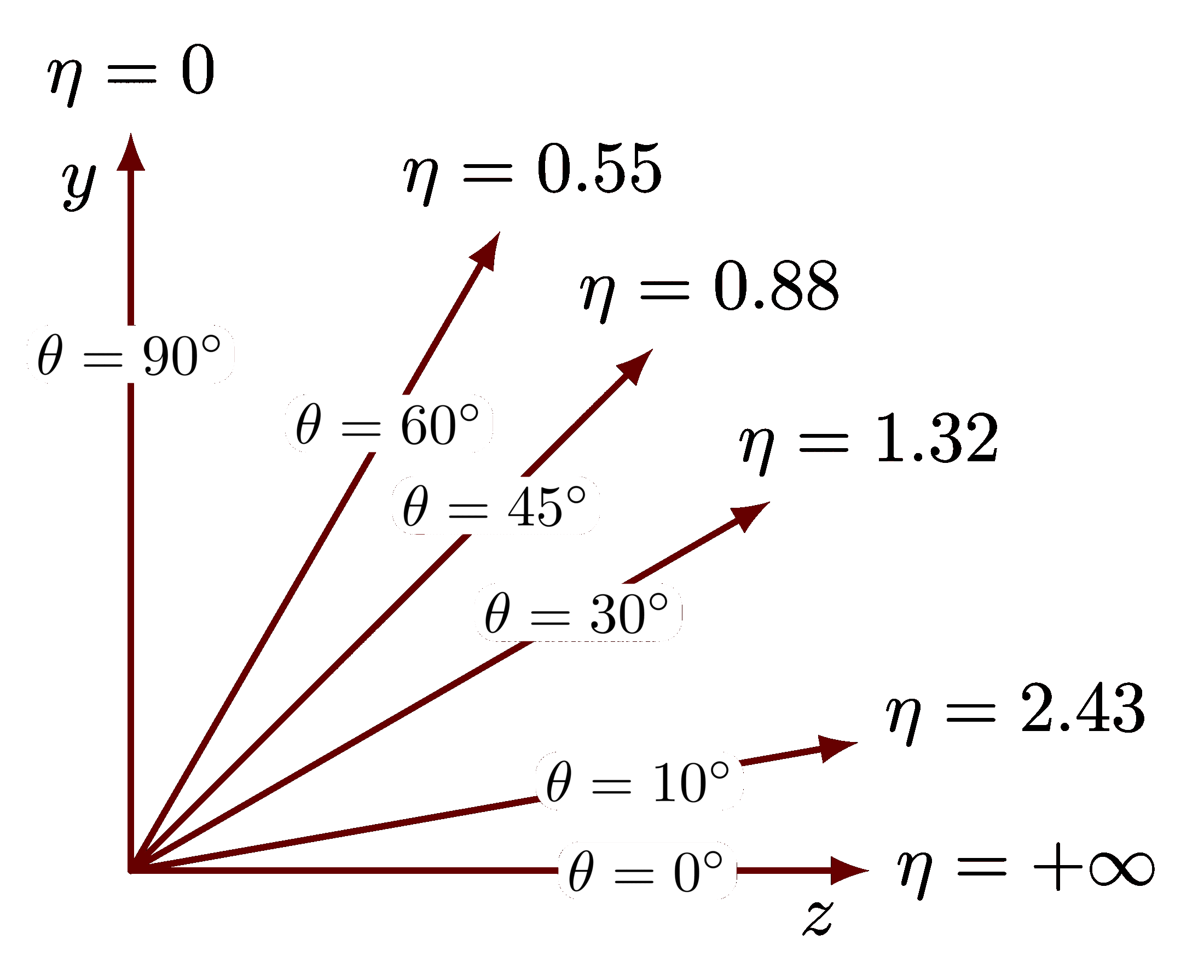For more figures related to the definition of coordinate systems, please have a look at the “coordinates” tag.
Edit and compile if you like:
\documentclass[border=3pt]{standalone}
%Drawing
\usepackage{tikz}
%Tikz Library
\usetikzlibrary{angles, quotes, intersections}
%Notation
\usepackage{physics}
\usepackage{bm}
\begin{document}
\begin{tikzpicture}
% %Grid
% \draw[thin, dotted] (0,0) grid (8,8);
% \foreach \i in {1,...,8}
% {
% \node at (\i,-2ex) {\i};
% }
% \foreach \i in {1,...,8}
% {
% \node at (-2ex,\i) {\i};
% }
% \node at (-2ex,-2ex) {0};
%Coordinates
\coordinate (A) at (6,0);
\coordinate (B) at (0,0);
\coordinate (C) at (2.5,2.5);
\coordinate (B') at (2.5,3.5);
\coordinate (A') at (1.8,3.2);
%Axis
\draw[thick,-latex] (-1ex,0) -- (6,0) node [below] {$x$};
\draw[thick,-latex] (0,-1ex) -- (0,5) node [left] {$y$};
%Vectors
\draw[thick] (0,0) -- (2.5,2.5) node[pos=0.6, above left] {$\varpi$};
\draw[thick, red, -latex] (2.5,2.5) -- (3.2,3.2) node[pos=1.2] {$\vu*{\varpi}$};
\draw[thick, red, -latex] (2.5,2.5) -- (1.8,3.2) node[pos=1.3] {$\vu*{\phi}$};
%Help Lines
\draw[dashed] (0,2.5) -- (2.5,2.5) -- (2.5,0);
\draw[blue, thick] (2.5,3.5) -- (2.5,1.5);
\draw[dashed] (3.53,0) arc (0:90:3.53);
%Angle
\pic[draw, ->, thick, "$\phi$", angle eccentricity=1.7] {angle = A--B--C};
\pic[draw, thick, angle radius=4mm, angle eccentricity=1.7] {angle = B'--C--A'};
\end{tikzpicture}
\end{document}
Click to download: polar_1.tex
Open in Overleaf: polar_1.tex
This file is available on GitHub.
See more on the author page of Alexandros Tsagkaropolulos.




